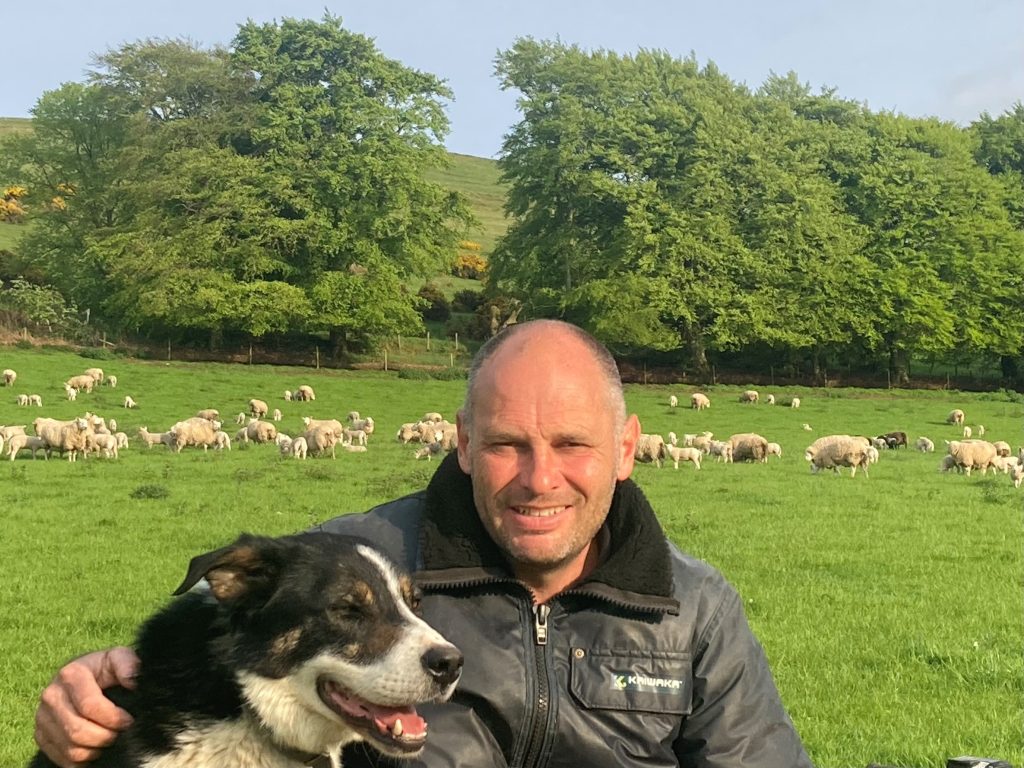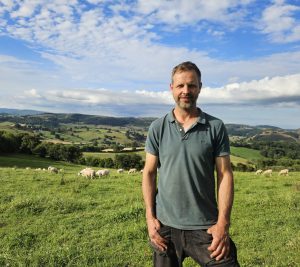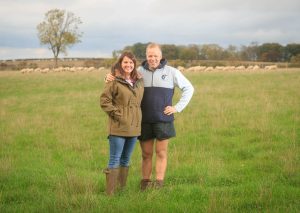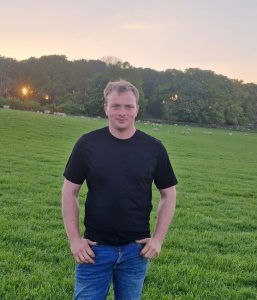with thanks to Colin Cuthbertson, Biggar, Lanarkshire.
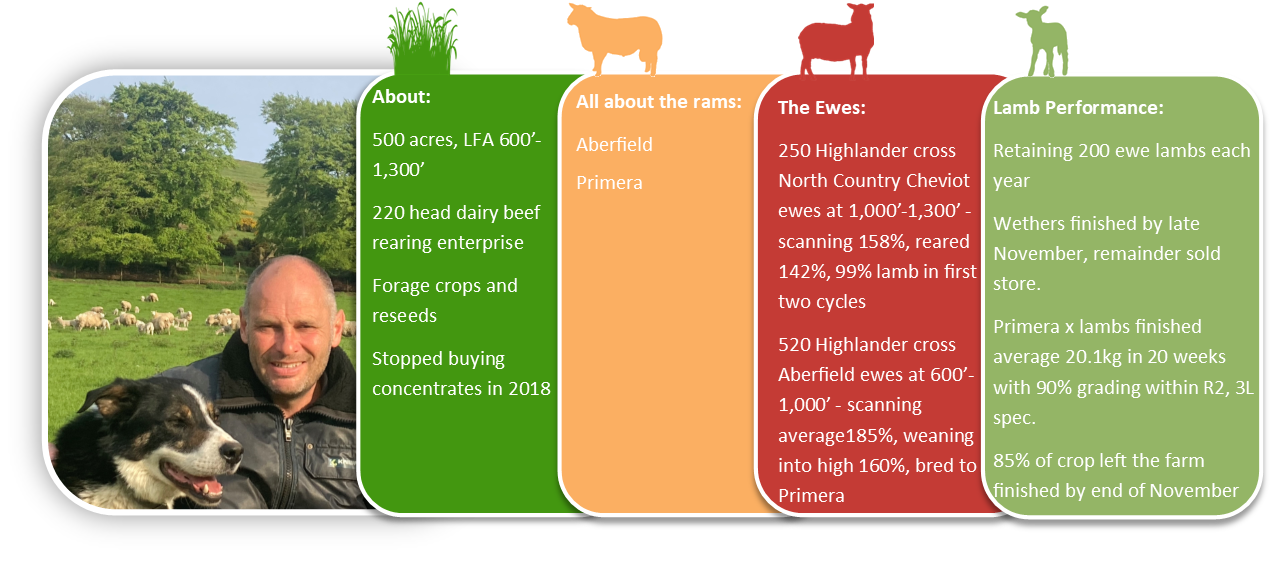
Swapping traditional sheep farming for a minimal input moderate output system is providing a sustainable farm business solution for Colin Cuthbertson. “There’s no room for vanity here; it’s all about improving efficiency and I’ve reached the stage where the unit will now stand on its own two feet without payments.
“Outdoor lambing, which I can manage virtually single handed has replaced a labour-intensive indoor system. I’ve introduced forage crops and reseeds and in 2018 stopped buying concentrate, while traditional breeds are being swapped for Innovis genetics which have been forage bred and reared and are particularly suited to low input systems,” explains Colin who farms with his wife, Jill near Biggar, Lanarkshire.
“Over the last seven years, we’ve replaced our Cheviot Mule flock run on the lower ground with Highlander cross Aberfield ewes scanning an average 185% and weaning into the high 160s%. They’re bred to the Primera meat sire to leave lambs that require minimal intervention, they hit the ground running, they’re lively at birth and go on to grow fast off grass – last year they finished at an average 20.1kg in 20 weeks with 90% grading within the R2, 3L spec. 85% of the crop left the farm finished by the end of November at which point we sold the remainder store.
“Our second flock which runs on the hill, is currently in transition from Cheviot to pure Highlander. Last season it scanned 158% and reared 142% which is enough. We bring these ewes down to lamb at 1,000’ on to reseeds. 99% are lambing within the first two cycles. Any ewe scanning empty is culled. We’re currently retaining 200 ewe lambs each year while the majority of wethers are finished by late November, while any remaining are sold store.
Colin says the Highlander’s maternal traits are ‘second to one’. “They literally lamb themselves, they’ve ample milk, and are very defensive of their lambs which when added together significantly contribute to low input; I check each flock three times a day during lambing.
“Previously, when we lambed indoors the system was unsustainable, far too labour intensive and expensive. I’d had experience working on a unit in South Island, New Zealand where one person managed 5,000 ewes – it blew me away how little management was required. While legislation will never allow us to reach that minimal level of input in the UK, I think I’m now getting as close as we can.”
Colin’s journey to restructure his Cheviot flock’s genetics begin back in 2014. “We wanted to get away from buying in replacements from an indoor system. I also wanted to be wholly self-sufficient in replacements for health reasons while having the opportunity to select for maternal ability. I believe that replacements born and bred on the same farm perform better than those bought in and then having to adapt.
“We used to breed the Cheviots to the Bluefaced Leicester however buying them in was a soul-destroying exercise; keeping them alive was a nightmare. We tried various breeds, however things changed after we invested in one Aberfield ram. We ran him alongside three Leicesters over 250 ewes without any supplementary feed, he went out at 115kg, returned 2kg lighter and remained grazing outdoors, while the Leicesters came back literally skin and bone and had to be housed and fed all winter – a totally unsustainable scenario.”
Colin admits that was the lightbulb moment. “The following year, we agreed to quit using the Leicesters and replace with Aberfields – we ran three rams with 250 ewes. We then learned about the Highlander’s potential to suit a low input hill unit and the rest is history.”
Improved forage management goes hand in hand with the low input system, Colin explains. “We’re annually reseeding up to 30 acres with red clover mixes and have introduced 25 acres of forage crops including stubble turnips for the ewes scanned with multiples. We’ve also cut back on fertiliser, however to kick start growth, we still apply NPK as required to 250 acres of grazing and 60 acres set aside for silage; we are intensively stocked and can’t afford to go hungry.”
The Aberfield cross flock is set stocked at five ewes per acre at lambing. Immediately after lambs are tail docked, they’re introduced to mobs of 160 to 180 ewes and lambs and rotationally paddock grazed. “We move them on every five to six days. Meanwhile Highlander hill ewes with singles return to the hill while the rest with multiple lambs stay on the in bye until shearing.
“We’ve found both flocks maintain themselves year-round in body condition score 3 to 3.5; they do particularly well solely on forage during winter and for the last five years I’ve never felt the need to feed concentrate.”
He adds: “While I believe the current payment system has run its course, we are satisfied we’ve already made a head start towards taking out costs and adopting a new regime to improve this unit’s efficiency and achieve a sustainable enterprise.”
